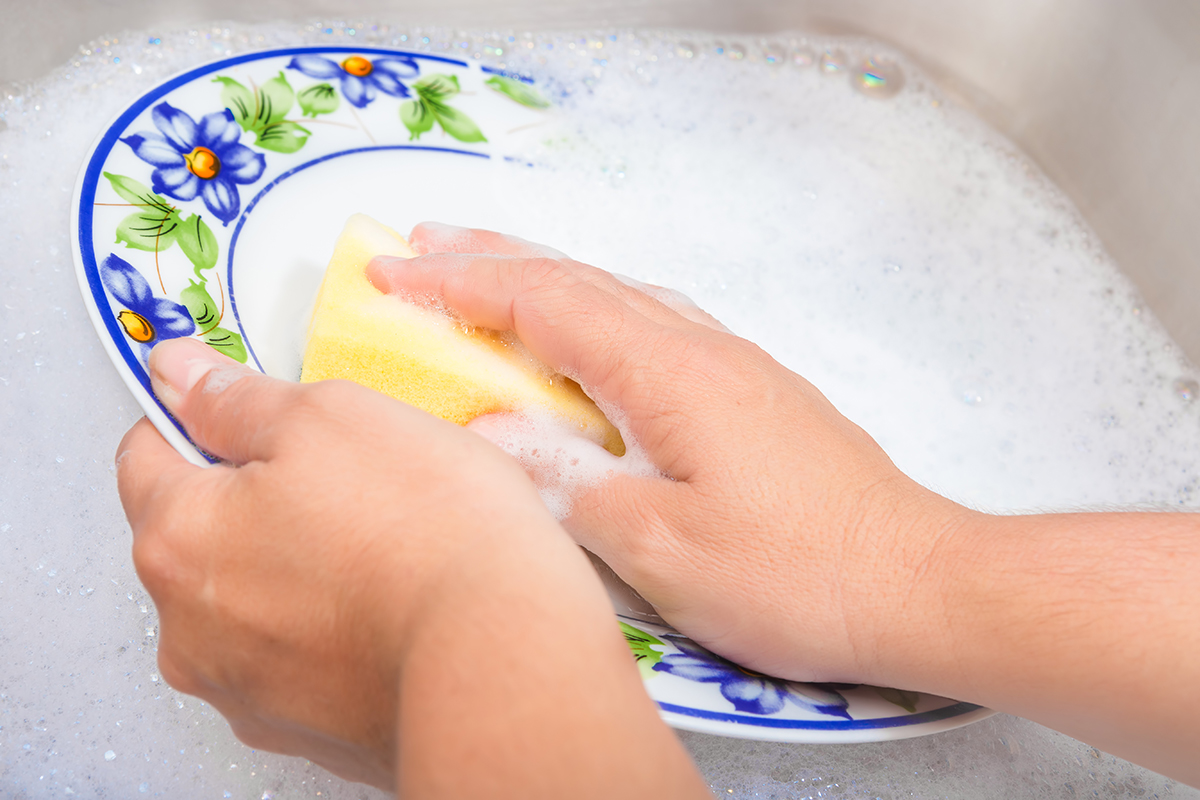 May
30
2018
May
30
2018
Laundry Basics: How to Wash Delicates
From light-as-a-feather silk to beautiful lace, delicate fabrics can be amazing to wear. Whether it’s a silk men’s shirt or a chiffon dress, your delicates are an investment to take care of, and the key to ensuring your delicate fabrics last as long as possible is washing them correctly. With a little extra effort, you can keep your fabulous delicates in good condition for as long as possible.
1. Which fabrics are delicates?
Delicate fabrics include silk, wool, linen, chiffon, lace, and other fabrics with embroidery or embellishments. While cotton isn’t usually considered a delicate fabric, very thin cotton clothing can warrant delicate treatment.
Delicates tend to be sensitive to heat and excessive spinning, along with harsh detergents. They can be prone to shrinking or fraying if proper care isn’t taken during the washing and drying stages.
2. Hand washing vs machine washing for delicates
Hand washing is likely the best way to keep your delicates in great condition. With hand washing, you can decide how much pressure to use at every stage, and you can ensure the water temperature is appropriate.
To hand wash, use a suitable delicates laundry detergent, ideally one without harsh chemicals or fragrances. Mix the detergent with water in your sink or basin and gently swirl your garments. Give extra attention to stains by rubbing the spots gently.
Note: it’s not always practical to be hand washing all the time. Additionally, washing machines typically come with a delicates cycle, so you can save some time and energy on hand washing.
3. Check the care instructions

The best way to know if you’re dealing with a delicate item is to check the care instructions. The label will tell you if the item needs extra care for washing and drying. Some delicates will recommend hand washing only. In that case, make sure you avoid putting your delicate garments in the washing machine unless you’re sure your machine’s hand-wash is gentle enough.
4. Sort delicates by type and colour
Where possible, sort your delicates by colour and type to avoid damage. For example, lace should only be washed with lace, as mixing it with something like sequenced garment could cause damage to the lace items. If there’s any zippers, fasteners, or attachments that could cause other garments to catch, make sure these are zipped up to reduce the risk of tangles.
It’s also important to organise your delicates by colour. Don’t wash dark colours with light colours, as this can lead to fabric stains and bleeding.
5. Only fill the machine halfway
Underfilling the machine could prevent delicate fibres from tangling. Choose the half-load option where possible to save water and energy.
6. Pre-treating stains
If you have stains on your delicates, use a suitable pre-treatment product to give your wash cycle the best chance of removing the stains. If you have a pre-soak option on your machine, run this cycle for delicates with stains, as this will help with easing out the stains before the main wash cycle.
7. Use mesh bags
Use multiple mesh bags for your delicates to protect them during the wash cycle. Place no more than a few garments in each mesh bag. The mesh bags are essential as they help reduce the risk of your delicates getting stretched and snagged during the wash. You can mix delicate types but not colours in each cycle. If you have garments of different colours, wash them in a separate cycle.
8. Choose the right detergent
Using a detergent designed for delicates is vital, as harsh detergents can damage the delicate fabrics in these garments. Look for bio-home’s all-natural, biodegradable products without synthetic enzymes, dyes, or fragrance, and keep in mind natural products can work just as well if not better than chemical-laden detergents. These will be easier on your fabrics as well as your skin and respiratory system.
9. Wash on the right cycle
Check that you’re washing the clothes on the right cycle. Washing machines typically have a delicates or hand-wash cycle, but if not, the shorter, most gentle washing cycle could be appropriate. Use cold or lukewarm water to avoid bleeding and shrinking, and always choose the cold rinse.
10. Air dry
Avoid using the dryer for your delicates as this can lead to shrinkage. However, if you have a dryer with an air-dry or air-fluff-only option, you could dry your delicate garments in mesh bags for half a cycle (check the clothing label first). Lay your items flat or over a line to air dry, out of harsh, direct sunlight.
Washing your delicate garments doesn’t have to be a stressful, fear-inducing experience. As long as you include a few extra steps to your usual laundry process, you can keep your beautiful delicates in excellent shape for a long time to come.
bio-home offers eco-friendly, biodegradable cleaning and washing products that are 100% plant based. Our range is easy on the environment yet strong enough to achieve great cleaning results, including for delicate garments. Explore our amazing product range to find out more about how bio-home could help you achieve the best cleaning outcomes for the laundry.
To find out more about laundry detergent and how to use it properly, read our Laundry Guide here.



